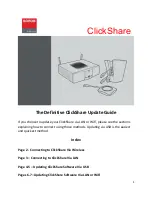
2000 Sep 06
5
Philips Semiconductors
Magnetoresistive sensors for
magnetic field measurement
General
Two further resistors, R
T
, are included, as shown in Fig.5.
These are for trimming sensor offset down to (almost) zero
during the production process.
For some applications however, the MR effect can be used
to its best advantage when the sensor output
characteristic has been linearized. These applications
include:
•
Weak field measurements, such as compass
applications and traffic detection;
•
Current measurement; and
•
Rotational speed measurement.
For an explanation of how the characteristic is linearized,
please refer to the Section “Further information for
advanced users” later in this chapter.
Philips magnetoresistive sensors
Based on the principles described, Philips has a family of
basic magnetoresistive sensors. The main characteristics
of the KMZ sensors are given in Table 2.
Fig.5
Bridge configuration with offset trimmed to
zero, by resistors R
T
.
handbook, halfpage
MLC129
2
1
GND
VO
VCC
VO
RT
RT
3
4
Table 2
Main characteristics of Philips sensors
Notes
1. In air, 1 kA/m corresponds to 1.25 mT.
2. Data given for operation with switched auxiliary field.
SENSOR
TYPE
PACKAGE
FIELD
RANGE
(kA/m)
(1)
V
CC
(V)
SENSITIVITY
R
bridge
(k
Ω
)
LINEARIZE
MR
EFFECT
APPLICATION
EXAMPLES
KMZ10A
SOT195
−
0.5 to +0.5
≤
9
16.0
1.2
Yes
compass, navigation, metal
detection, traffic control
KMZ10A1
(2)
SOT195
−
0.05 to +0.05
≤
9
22.0
1.3
Yes
KMZ10B
SOT195
−
2.0 to +2.0
≤
12
4.0
2.1
Yes
current measurement,
angular and linear position,
reference mark detection,
wheel speed
KMZ10C
SOT195
−
7.5 to +7.5
≤
10
1.5
1.4
Yes
KMZ51
SO8
−
0.2 to +0.2
≤
8
16.0
2.0
Yes
compass, navigation, metal
detection, traffic control
KMZ52
SO16
−
0.2 to +0.2
≤
8
16.0
2.0
Yes
mV V
⁄
(
)
kA m
⁄
(
)
---------------------






































